Corn emergence speed
In corn, periodic soil preparation provides several effects for its implementation, one of which is the speed of seedling emergence.
Used in conjunction with a soil electrical conductivity sensor, the LS G40 tractor has become an important ally of Prisma Intelligence Agronomic in generating data that makes crucial decisions in Precision Agriculture even more assertive.
This month, the Cultivar Máquinas team's destination was the Rio Verde region, Southwest of Goiás, to learn about a special application of the LS tractor, model G40. There we were able to see this remarkable little one perfectly integrated into the application of mapping techniques for diagnosis in Precision Agriculture, carried out by Prisma Análise Agronômica.
As has been common in our recent tests, field evaluation with tractors has been contextualized with important operations of significant application and, sometimes, even as interesting as the test machine itself. On this occasion, we found the LS G40 tractor working in Precision Agriculture, moving an electrical conductivity sensor, of Canadian origin, from the company Prisma Intelligence Agronômica, which is an LS client.
The G40 LS model that we tested is a small tractor, with auxiliary front-wheel drive that has configurations very similar to the larger models available on the market.
The engine that equips it is from the LS brand, model L3AL – Tier 3 with three cylinders, displacement volume of 2.003cm3, with natural aspiration and mechanical fuel injection via rotary injection pump, which provides 40hp of power at 2.600rpm, according to the criteria. measurement of the ABNT NBR ISO 14396 Standard. The maximum torque is 114Nm and occurs at a speed of 1.800rpm.
The power transmission of this model is of the Synchro Shuttle type, with 12 forward and 12 reverse speeds, with a synchronized inverter, which stands out in its category. The reverse lever is located on the instrument panel, to the left of the steering wheel.
The mechanical arrangement of the transmission is made up of three groups and four speeds, with gear changes synchronously, with a speed range that goes from 1,3km/h to 24,6km/h at the front. The gear and group change levers are positioned on the sides, with the speed change lever at the front and the speed change lever behind.
The power take-off (TDP) is independent, with a standardized speed of 540rpm, at an engine speed of 2.509rpm. The TDP's electro-hydraulic drive stands out in this category, when other competitors use a lever.
The three-point hydraulic system is category I and features position and working depth control. The maximum system pressure is 200kgf/cm2 and the maximum pump flow is 47 liters per minute. Measured at the eye, the maximum capacity of the lift is 820kgf. As a standard item, it features a remote control valve (VCR), composed of an oil input terminal and an oil output terminal, for activating coupled equipment.
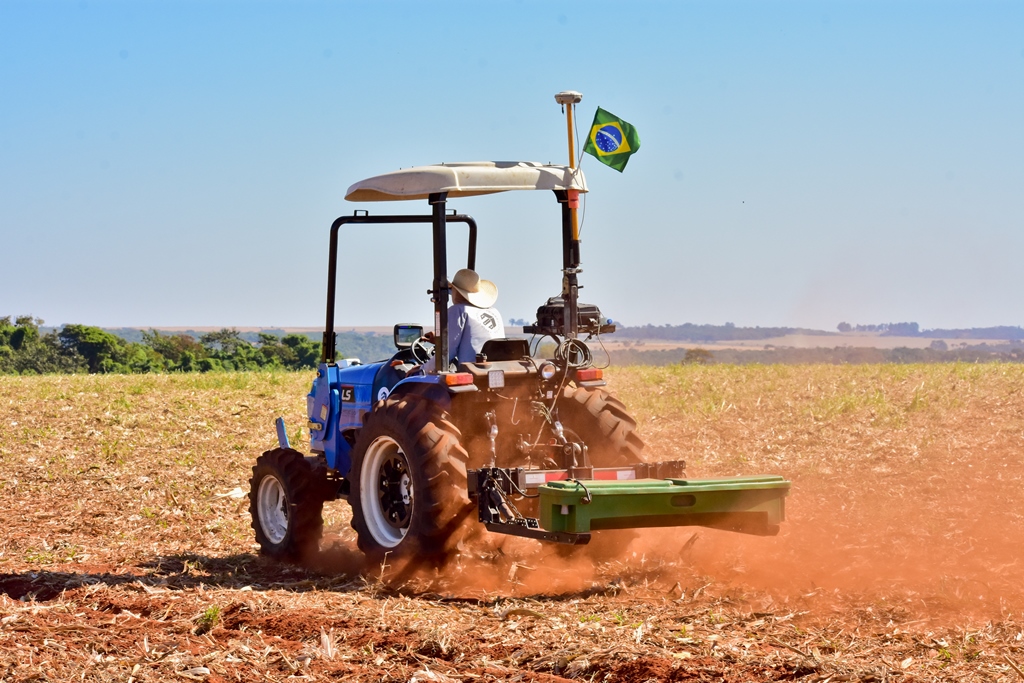
There are two tire configurations available for this model, the standard one with front tires measuring 8.00x16 and the rear tires measuring 12.4-24 R1. However, there is an option with 6.00x14 front tires and 9.50x24 R1 rear tires, for specific situations. With standard tires, the tractor has a total length of 3.316mm, a total height of 1.083mm and a total width of 2.286mm. The wheelbase is 1.674mm and the ground clearance is 300mm. The total weight is 1.865kgf, and with this condition the weight/power ratio is 46,6kgf/hp. To ensure good daily working autonomy, the fuel tank holds 28 liters of diesel.
An important mention to be highlighted of this model is the front driving axle, which is shielded, with drive without crossheads, a traditional alternative from the LS brand, which focuses on reducing the turning radius and reducing maintenance operations, in addition to the best system seal.
The operator's station is a platform type, without the uncomfortable levers between the legs, with a non-slip floor surface and with adjustable position of both the seat and the steering wheel. The manufacturer equipped this open station with a two-point, folding safety arch, where a sun and rain protection roof can be mounted.
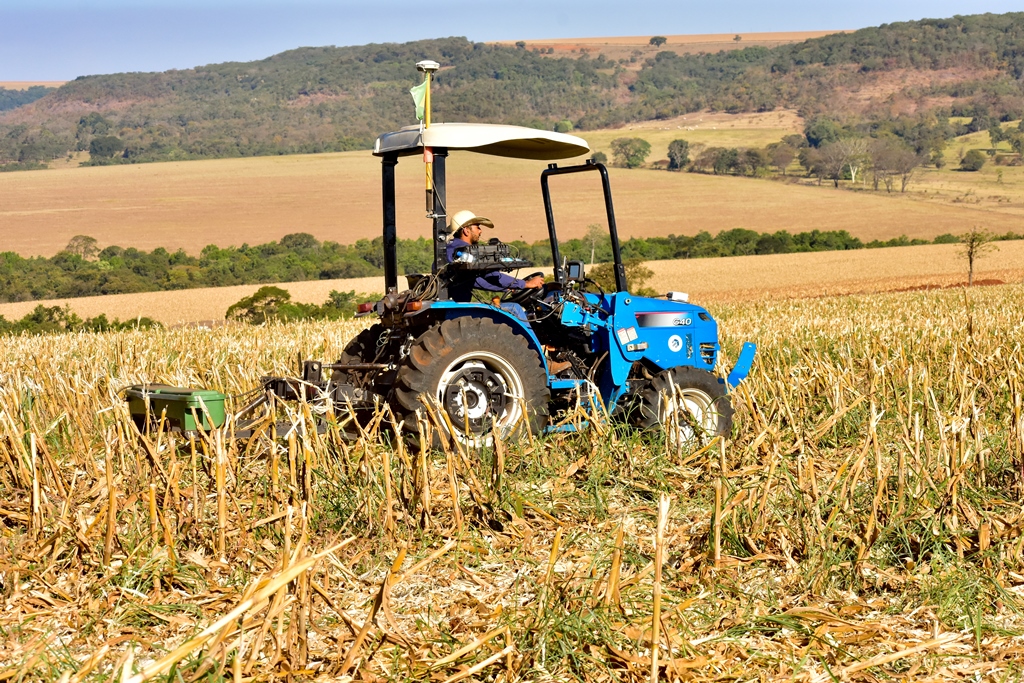
The front hood, which covers the engine and its accessories, is foldable and provides access to the various components that require maintenance, making operation easier and faster.
Although it was not present on the test tractor, the manufacturer offers two components as optional items, which are: the LS engine protection system and the telemetry system. In the first, the oil pressure and coolant temperature sensors communicate with an electronic module, which in addition to warning the operator through a small panel of lights and an audible signal, can shut down the engine in the event of an irregular pressure. and temperature. Everything can be configured and controlled from a scanner or notebook. The second option, worthy of mention, is the telemetry system, which is the result of a partnership between LS and the Argentinean company Colven and which serves to monitor and record the machine's operation and conditions online. There are already several systems delivered on different models of LS tractors and we have even tested these systems in another edition of Revista Cultivar.
The equipment attached to the LS G40 tractor, used in the test drive, is a Canadian electrical conductivity sensor. Electrical conductivity is a parameter that has recently been used in Precision Agriculture in our country. The parameter indicates the ability of a material to conduct electrical current in the environment where it is applied. In this case, the medium is the soil that you want to analyze. In soils, which are made up of mineral and organic particles, as well as water and air, this electrical current is conducted by its components.

This practice began in the United States, with direct contact equipment, in which metallic parts came into contact with the ground, creating a magnetic field. Although this system is still used and available, including commercially in the country, the sensor that was applied to the LS tractor is electromagnetic induction, which is made up of two coils, which emit electric current without coming into contact with the ground, collecting information. Specifically, this type of equipment uses two coils, one of which emits energy and the other receives the return of the excitation caused to the ground.
With this equipment in action, a map of electrical conductivity can be obtained, which can be correlated with the factors on which conductivity depends, which are, in general, the water content in the soil, its mineral composition and the condition soil structure, mainly. This sensor has been used by the company Prisma Intelligence Agronômica, from Rio Verde, Goiás, coupled to an LS G40 tractor. Currently, the company is using the first, which we tested, and the second sensor will be attached to a tractor that was recently acquired.
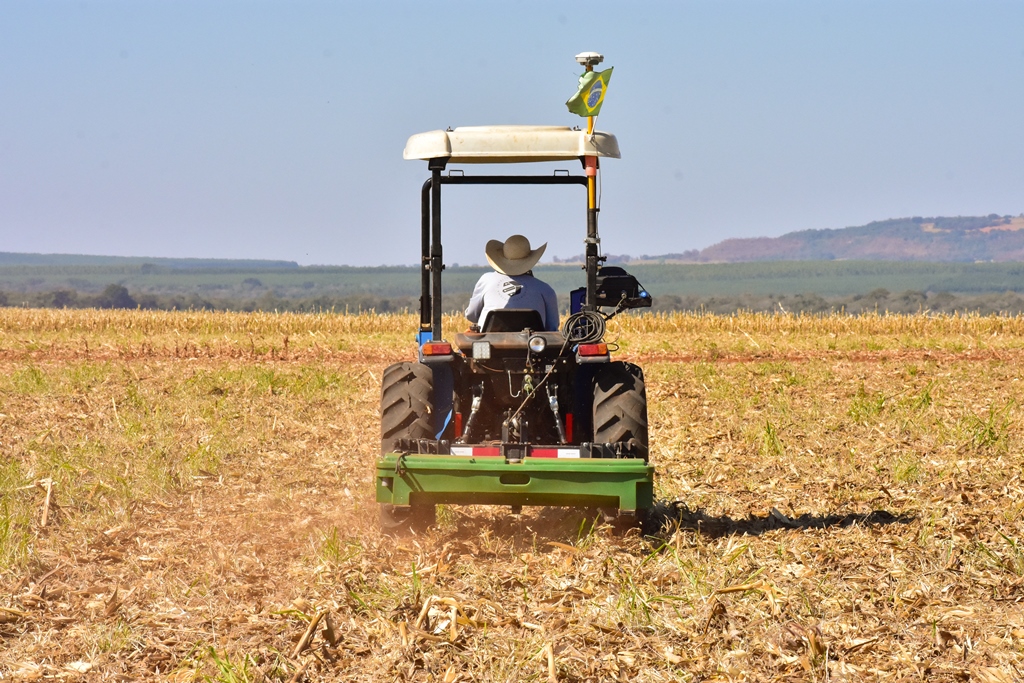
This sensor has been used for a year and a half to determine 12 soil attributes, related to the apparent electrical conductivity of the soil, indicating measurement values of subsurface conductivity and magnetic susceptibility for characterizing the soil profile, at depths of 0,5m and 1m, recording elevation data, conductivity at 0,5m and 1m and susceptibility at 0,5m and 1m. In addition to the sensor, the equipment consists of a harness (data cable), a controller (modem and HD), a monitor (interface) and the GPS RTK antenna.
The alternative that generated this use arose from the difficulty in quality sampling in situ of large areas, where the problems of cost, in the case of smaller grids, and inaccuracy, in the case of grids with lower resolution, due to the spacing of the points.
We had the opportunity to learn about both the data collection work and the processing of the information at Prisma's headquarters, which, after being interpreted, becomes knowledge, which will be passed on to the producer.
During the field test that took place at Fazenda 2P, owned by the client Antonio Pimenta Martins, in the town of São Tomás, in Rio Verde (GO), close to the railway, the LS G40 tractor had to move through the field at an approximate speed of 18km/h to 20km/h supporting the equipment, in the three-point hydraulic system, which read the parameter.
A GPS monitor placed in front of the panel provided guidance for the operator to follow the line previously configured for sampling.
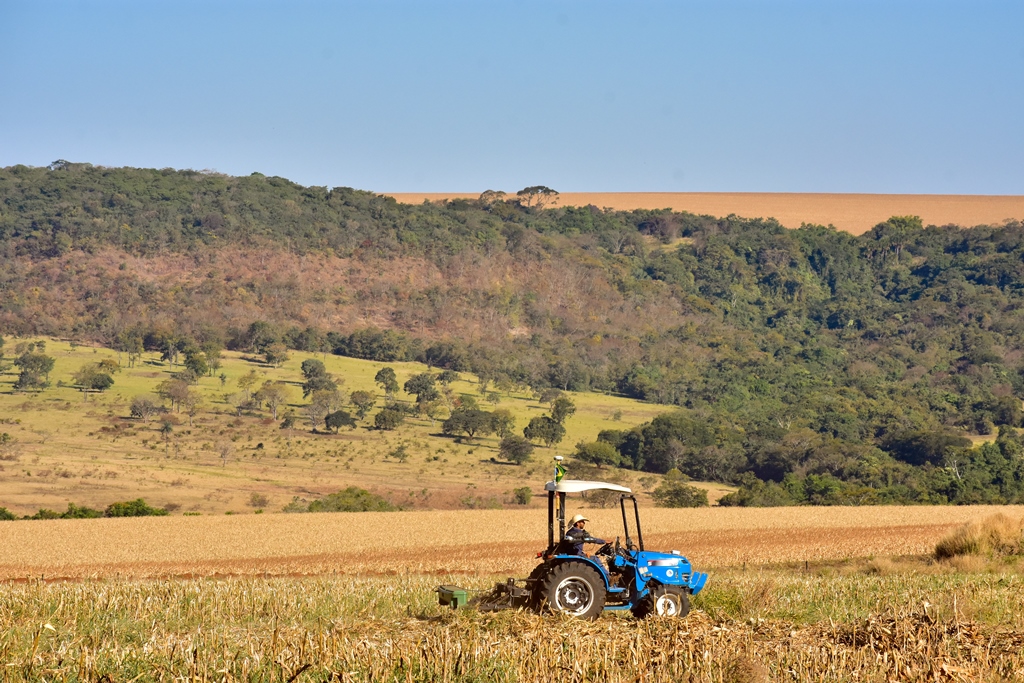
During the operation, Prisma members told us that since the beginning of the operation, several vehicles were used, before arriving at this alternative, the tractor, which proved to be the most viable. Off road vehicles, such as the Troller, and UTV (Utility Task Vehicle), such as the Polaris, were used, but the LS small tractor alternative was the best. The issue of operational cost, mechanical resistance, practicality of operation and coupling, in addition to the best cost/benefit ratio, since the acquisition cost of the alternatives was the same, but the tractor is more economical.
After several tests, the company arrived at a system that is well proven for operation. The team already knows that for a good soil assessment it is necessary that the profile is greater than 0,5m and 1m and that the distance between passes is 12 meters, for areas smaller than 30 hectares, and 24,4 meters, for areas of more than 30 hectares. Using this configuration and indicated speed, it is possible to map up to 350 hectares per day, with an operational capacity of 40 hectares per hour, recording the information, which will then be sent digitally to the company's office for interpretation.
By the way, the working speed of 18km/h to 20km/h is not limiting for the equipment in terms of acquisition, but this limit is used depending on the acquisition frequency. During the tests, the LS G40 tractor was working in 4th gear, at a speed of 2.200rpm, developing real speeds between 17km/h and 18km/h.
During this period, with just one sensor in use, 14 thousand hectares have already been mapped in the region. With the acquisition of the second LS G40 tractor and the extension of the working day, through the training of new operators, the company hopes to greatly multiply its service capacity.
We know the activity of Prisma Intelligence Agronomic, which is based in Rio Verde and works with consultancy and agronomic planning. The company adopts four pillars of work: operational, chemical, physical and biological. All consultancy work is based on joint and integrated analysis.
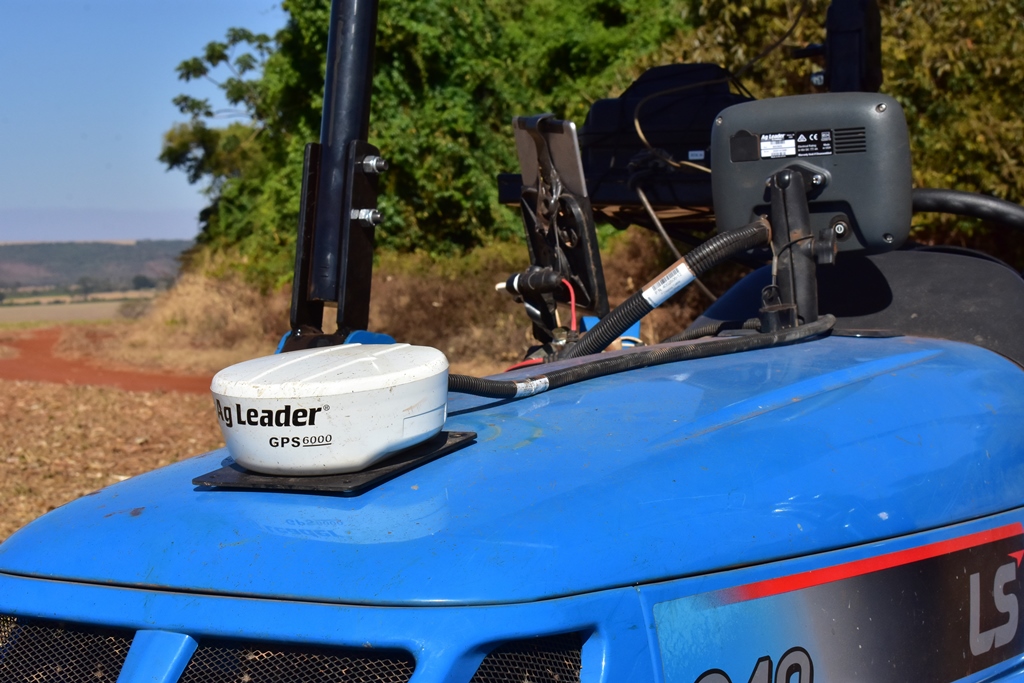
We were welcomed by the company's partners, the founding CEO, Leonardo Ferreira; the administrative director, Lucas Rozas, and the product marketing coordinator at LS Tractor, Joaquim Ferreira. In addition to telling us about the philosophy and way of working with producers, they showed us the current physical structure, expansion and available equipment.
Prisma Intelligence Agronomic began its activities in 2019, after engineer Leonardo left a stable job at a cooperative in the region. With the economic contribution of Grupo RS Construções, an investor group from Vinhedos, SP, the experience received from a North American startup and the entry of partner Lucas, the initial idea grew and became one of the most popular agribusiness consulting companies. solids in the region.
During this period, equipment was acquired, such as electrical conductivity sensors, Vant-type aircraft (Unmanned Aerial Vehicle), with multispectral cameras, a drone with a thermal camera, ground penetration resistance meters (penetrometers), RTK GPS antennas and sampling probes. , used to obtain data and assembled in a data processing system, which supports the processing and interpretation of data.
During interventions in customer areas, field technicians take information and classify the property's environments between classes A and E, with the best classes being those that can provide the highest productivity and profitability and those closest to E being those that They need more attention to stay productive. Engineer Leonardo explained that going from class E to C, for example, is very difficult, but going from A to C is very easy, all it takes is for the producer to not pay attention to the signs that the soil and culture give.
Additionally, Prisma recently became a Precision Planting dealer, providing training and diagnostic equipment for different brands that adopt Precision Planting components in their products.
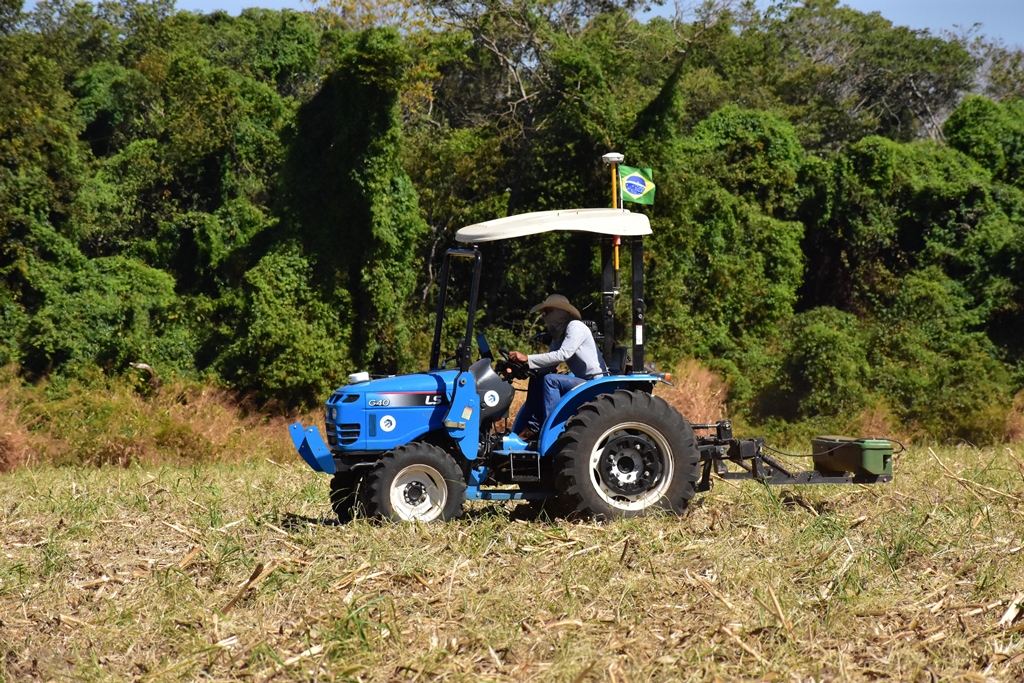
In addition to diagnostic consultancy, Prisma has an operator training area, the Academy, which trains people in charge of operating machines such as grain harvesters, in order to minimize harvest losses, distribute straw well in direct planting and carry out of harvest maps, which is an important tool as a property exit audit. On the maps, the analysis of high productivity zones indicates those places where there was greater extraction of nutrients and, therefore, more attention should be paid to fertilization. The basis of Prisma's analysis begins by trying to understand the soil's DNA, which will be the foundation for other analyses. This begins by knowing the electrical conductivity of the soil layers in the rural producer's area. In this way, the service currently offered is in accordance with the producer's needs and the service is agronomic consultancy, individualized and tailored to the conditions of each location and crops.

Currently, the company has 18 employees and a logistics structure, made up of equipment and vehicles that allow it to serve producers in all regions of the country, mainly in the Central-West region.
Taking advantage of the visit to Prisma's headquarters, we had the opportunity to meet a client of the company, producer Luiz Peruzzo, an agricultural engineer trained at Unioeste and with extensive experience in agriculture. Originating from a family of producers from Paraná, from the Cascavel region, who first arrived in Mato Grosso and then in Goiás, Tocantins and Minas Gerais, 20 years ago. He, his uncle, cousins and brothers manage the family's agricultural areas.

In the area located in Rio Verde, managed by him, he saw the need to implement a Precision Agriculture system. With his knowledge and support he started, and after a few years he came to discredit the system and spent two years without using any Precision Agriculture technique. In his experience, using an intense sampling grid becomes expensive and using less resolution becomes inaccurate. There were years of doubts and uncertainties about the usefulness of the techniques.
When he learned about Prisma's method, with the determination of management zones, he started using the techniques throughout the farm and today he is very satisfied with the service and, above all, with the result. According to him, the biggest advantage is that he can now see things that turn into decisions.
With the diagnosis, he has already started implementing soil recovery culture in 10% of the total area. Although it is thought that the Central-West has very homogeneous areas, more so than in the South of Brazil, the plots are not homogeneous, with texture variations ranging from 10% to 50% clay in the composition. The region's average productivity is 65 bags of soybeans per hectare, the rainfall is 1.600mm to 1.800mm per year, with the months of December and January historically being dry. Even so, the profitability is quite good, however, when the bad years arrive, if the soil is more structured, it becomes safer to achieve profitability.
At Fazenda São José, owned by the Peruzzo family, the fleet of machines is a recent acquisition and has a harvester and seeder with all the technology for diagnosing harvested areas and applying varied rates. They greatly use and approve of Prisma's Academy service, which promotes operator training on equipment regulation and calibration in crucial operations, for the application of the recently acquired full package.
José Fernando Schlosser and
Marcelo Silveira de Farias,
Agrotechnology Laboratory - Nema - UFSM

Receive the latest agriculture news by email